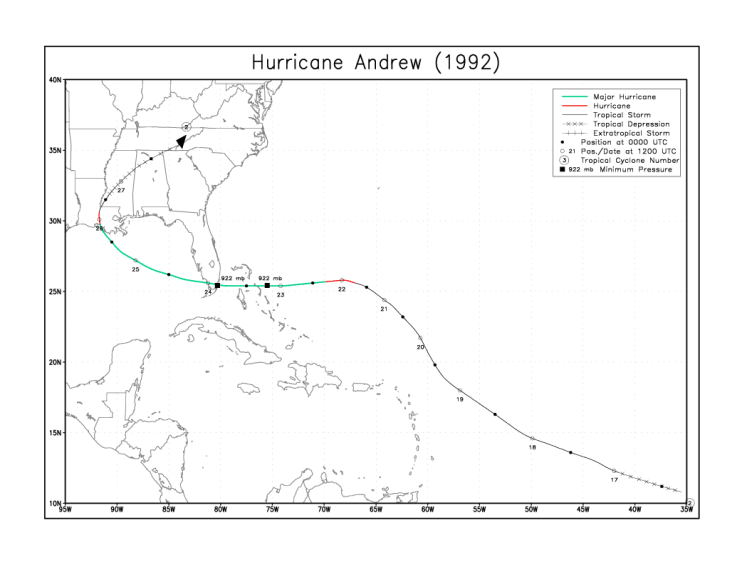

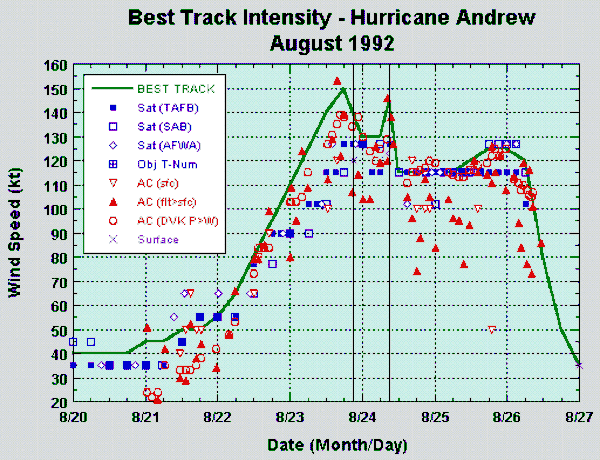
Fig. 2) Selected wind observations and proposed best track maximum sustained surface wind speed curve for name/dates. Aircraft observations have been adjusted for elevation using 90%, 80%, and 75% reduction factors for observations from 700 mb, 850 mb, and 1500 ft, respectively (Franklin et al. 2002).
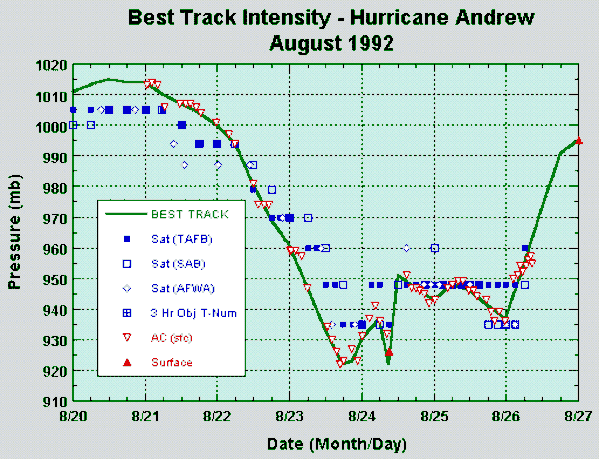
Fig. 3.) Pressure best track for Hurricane Andrew.
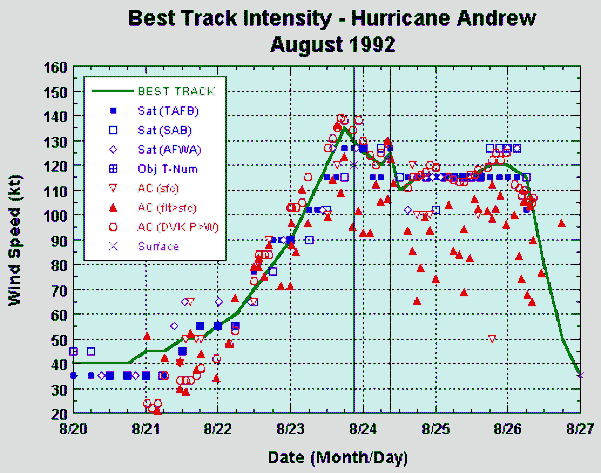
Fig. 4) Original wind best track for Andrew. Aircraft wind observations reduced to the surface (solid red triangles) are using the older NHC standard of 80% ratio without respect to flight level.
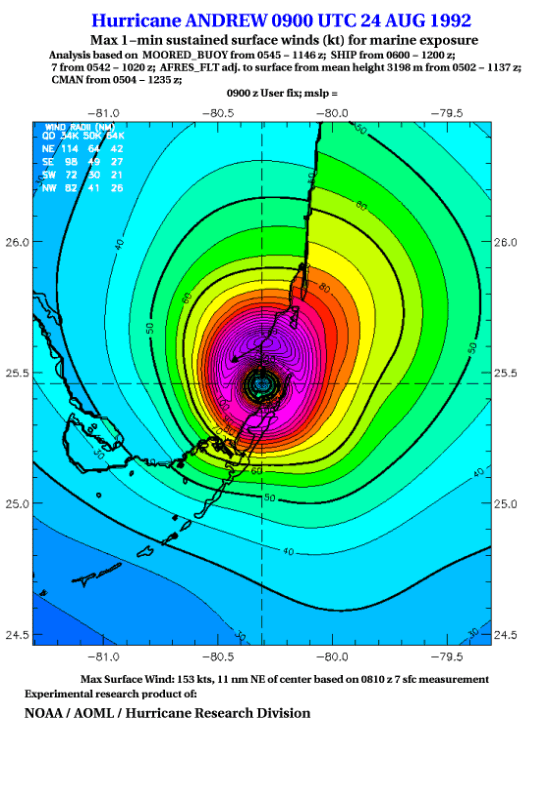
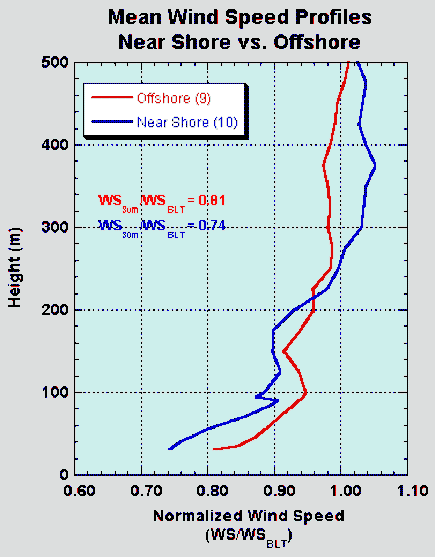
Fig. 6) Comparison of offshore (10-60 km in red) versus near shore (within 10 km in blue) GPS dropwindsondes lauched into the right eyewall of available hurricanes. No data is plotted below 30 m due to the reduced number of observations below that point.
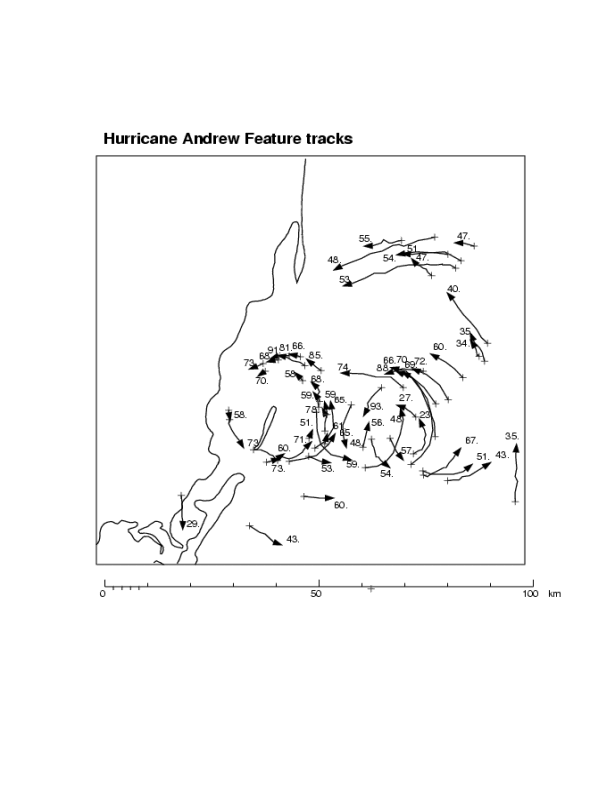
Fig. 8) Feature-track velocities during Andrew???s landfall from the Miami radar.
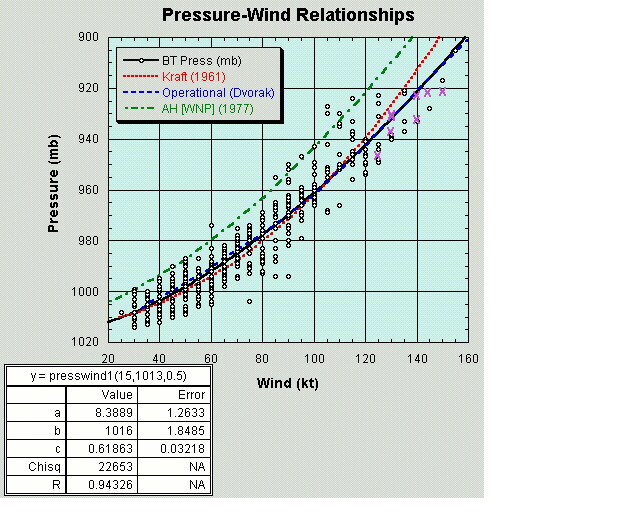
Fig. 9.) Best-track pressure-wind data from Brown and Franklin (2002). Circles are NHC best track pressure-wind pairs from 1997-2001 when reconnaissance data were present. Black line is best fit curve to these data. Dashed blue line is the operational (Dvorak 1984) pressure-wind relationship used by NHC. Purple Xs are the wind-pressure pairs from the proposed Andrew revision for wind speeds of at least 125 kt. The pressure-wind curves from Kraft (1961) in red and the Atkinson and Holliday (1977) in green are also shown, though the latter is derived for the Northwest Pacific (WNP) basin and is not appropriate for use for Atlantic basin tropical cyclones.